‘Toothless’ sanctions
Why the world’s largest waste management company made a $3 billion bet on the US.
Current Access Level “I” – ID Only: CUID holders, alumni, and approved guests only
Andrew Sabin Professor of Professional Practice, Director, Center for Climate Change Law, Columbia Law School
Michael Gerrard: So they’re using a cluster bomb approach. They want to slice and dice greenhouse gas emissions into little chunks, and then they say they should look at every little chunk on its own and whether it has measurable, local or regional impacts while ignoring the global impacts. So that’s why I call it a cluster bomb approach. If any one of these hits, then they might succeed in overturning the endangerment finding.
Bill Loveless: The US Environmental Protection Agency plans to rescind the foundation of its authority to regulate greenhouse gas emissions under the Clean Air Act. Rescinding the so-called endangerment finding is part of President Trump’s efforts to reverse Obama- and Biden-era climate policy. And the finding was targeted in the conservative Project 2025 strategy to reshape the federal government. But the rollback won’t happen without a fight, and the endangerment finding has held up to past legal challenges. Meanwhile, international courts are moving in the opposite direction. The International Court of Justice recently ruled that countries have legal obligations to address climate change and that fossil fuel subsidies could constitute internationally wrongful acts. So what would overturning the endangerment finding mean for US energy policy? What legal and scientific arguments is the administration using, and how do these conflicting domestic and international trends shape the future of climate law?
This is Columbia Energy Exchange, a weekly podcast from the Center on Global Energy Policy at Columbia University. I’m Bill Loveless.
Today on the show, Michael Gerrard. Michael is the founder and faculty director of Columbia University’s Sabin Center for Climate Change Law. From 2012 to 2018, he served as chair of the faculty of Columbia’s Earth Institute. Before joining the university in 2009, Michael practiced environmental law in New York for three decades. We talked about what EPA’s move could mean legally and practically if it is successful. We discussed how it could play out in states and in the power and transportation sectors, and we explored the implications of the recent International Court of Justice ruling.
Here’s our conversation. Michael Gerrard, welcome back to Columbia Energy Exchange.
Michael Gerrard: Glad to be with you again.
Bill Loveless: Well, Michael, I look forward to our conversation regarding this big announcement by the Trump administration. The work that you and the Sabin Center do on these legal issues stands out among the experts who follow these matters involving climate change. And while this is a big topic today in the United States, there are some major decisions involving climate change from international courts that I want to touch on before we finish our talk today. It may be important to draw a distinction between what’s happening in the United States and abroad, but let’s get to the issue of the day, which is the endangerment finding. Michael, what exactly is the endangerment finding and why is it so foundational to US climate policy?
Michael Gerrard: In 2007, in a landmark decision called Massachusetts versus EPA, the US Supreme Court said that EPA has the authority and actually the obligation to regulate greenhouse gases under the Clean Air Act if EPA formally finds that greenhouse gases pose an endangerment to public health and welfare. In 2009, under the Obama administration, EPA issued the endangerment finding, and that then became the legal basis for all of the actions that the Obama administration and then the Biden administration took under the Clean Air Act to regulate greenhouse gases. So this endangerment finding is a prerequisite to EPA’s use of the Clean Air Act for greenhouse gases.
Bill Loveless: And explain for our listeners, if they haven’t heard about it or heard about it entirely, what the Trump administration is proposing to do.
Michael Gerrard: The Trump administration now proposes to revoke the endangerment finding entirely and also to revoke its regulations on greenhouse gas emissions for motor vehicles.
Bill Loveless: Right, right. And this is, of course, been something that’s been under consideration by the administration and its EPA for some time now. EPA administrator Lee Zeldin announced the plan on the popular conservative podcast “Ruthless,” where he said this has been referred to as basically driving a dagger into the heart of the climate change religion. Those were his words, rather strong words, and I think it reflects the aim of the administration.
Michael Gerrard: That’s right. The opponents of climate regulation wanted the first Trump administration to revoke the endangerment finding. They never did that. They thought it would be too out there, too unlikely to succeed. But it was an explicit recommendation of Project 2025, which the Trump administration has very closely followed, and now they have gone ahead and advanced it in a 302-page proposed rulemaking, not counting technical appendices.
Bill Loveless: It’s a big announcement and one that deservedly is getting quite a bit of attention. What would it mean, legally and practically, for the Trump administration to overturn or revoke the endangerment finding? Would it end EPA’s ability or even its obligation to regulate greenhouse gases under the Clean Air Act? And is this move by the Trump administration even possible under the Clean Air Act?
Michael Gerrard: It wouldn’t have an immediate effect because the regulations that the administration would be prevented from issuing, they’re not going to issue anyway. They’re cutting back on their regulation of power plant emissions, and they’re cutting back on their regulation of motor vehicle emissions. So it’ll be a while before it would have a practical effect, although it has a strong signaling effect. It’ll certainly be challenged in court. But the US Supreme Court lately has been sympathetic to lots of other attacks on environmental regulation, and I can get into sort of the basis for what they’re doing, but it’s legally plausible what they’re doing.
Bill Loveless: Legally plausible. That’s interesting. If you could explain what is the legal basis the Trump administration is attempting to challenge the finding on, EPA says it will rely on a legal interpretation of the Clean Air Act to strike down the endangerment finding and not on a scientific rationale. What is the distinction there?
Michael Gerrard: So they’re using a cluster bomb approach. They’re throwing a lot of different theories up in the hopes that at least one of them hits. The principal legal theory that they’re using is they want to slice and dice greenhouse gas emissions into little chunks. They say we should only look at US emissions. And then for each air pollutant, such as carbon dioxide or methane, they should analyze each one separately. And then for each of these air pollutants, EPA says they need to analyze each kind of source separately, such as cars and trucks and power plants. And then they say they should look at every little chunk on its own and whether it has measurable local or regional impacts while ignoring the global impacts. So for example, they would only look at the carbon dioxide emissions from power plants and the emissions in the US and see can it be established that that chunk of emissions has a measurable impact on local or regional impacts. They are ignoring global impacts.
It’s the opposite of cumulative impact analysis. It’s a fragmented impact analysis. So that’s one of the legal theories that they’re using. Another legal theory that they’re using is using the major questions doctrine—the doctrine that the Supreme Court announced a couple of years ago in the West Virginia versus EPA case that says that even if the text of a statute says that maybe you can issue a regulation, if it’s a regulation of large economic or political significance, the agency can’t do that without explicit congressional authorization. So EPA is now saying there wasn’t enough explicit congressional authorization for the endangerment finding and everything that follows, and therefore they can’t proceed. So those are an overview of the two major legal arguments, but they’re also making a scientific argument. They relied in part on a report that was just issued by the Department of Energy by five scientists who are famous climate minimizers—they’re not climate deniers. They’re not denying that we have anthropogenic climate change, but they’re saying it’s not so bad. And climate change actually has some positive effects, like fewer people freezing to death. And so they are also making the scientific argument, but each of these different arguments they say stands alone. And so that’s why I call it a cluster bomb approach. If any one of these hits, then they might succeed in overturning the endangerment finding.
Bill Loveless: Yeah. And you say to some extent their attempt could be plausible, right? I’m recalling that decision in which the Supreme Court in the case West Virginia versus EPA overturned the Biden administration’s, and previously the Obama administration’s, attempts to regulate emissions from power plants, saying that there was not the explicit authority from Congress, as you noted just a moment ago. Does that suggest that that argument could prevail again in this situation if it got to the Supreme Court? It’s a much different court today than the one that ruled in Massachusetts versus EPA back in 2007.
Michael Gerrard: Right. Well, the first step will be the DC Circuit because inevitably there’ll be a lot of lawsuits challenging this, and these kinds of cases first go to the DC Circuit. Right now, of the 11 active judges on that court, there are seven democratically appointed members and four Republican-appointed members. So it’s random which three judges of these 11 gets the case. So to a certain extent, it’s the luck of the draw, and we’ve seen that the outcomes of some of these decisions are heavily affected by who the judges are. And that whole process will take a while. You could spend a year getting a DC Circuit decision. And then it could go up to the US Supreme Court. The Massachusetts versus EPA decision of 2007 was a five-to-four decision. All five are gone. We now have a six-to-three split of conservatives, and there may be five or possibly six votes to favor the Trump position here. In the last few years, including in the West Virginia case and several others, the Supreme Court has gone out of its way to weaken environmental regulation under the Clean Air Act, the Clean Water Act, the National Environmental Policy Act.
So I say it’s plausible. I don’t want to say whether it’s likely, but it’s plausible that it’ll play out this way again.
Bill Loveless: Have there been any prior attempts by states, industry groups, or others to challenge the endangerment finding in court?
Michael Gerrard: Yes. When the endangerment finding was first issued in 2009, that was challenged in court. The DC Circuit resoundingly rejected the challenge. There was then a lawsuit that went up to the Supreme Court challenging the endangerment finding and many other things that EPA had done. The Supreme Court didn’t even want to look at the endangerment finding issue. They left that alone. They left alone most of the other things that EPA had done, but they struck down one small element. That was a case called Utility Air Regulatory Group versus EPA. EPA has been asked several times since then to—I’m sorry, the Supreme Court has been asked several times since then to overturn the Massachusetts case. It has refused to take up any of these cases. But now, EPA is taking an interesting approach. They’re not saying that the Supreme Court needs to overturn Massachusetts versus EPA. They just want to interpret it more narrowly. They want to say that although it’s true that the Supreme Court said that greenhouse gases are air pollutants within the meaning of the Clean Air Act, they say they want to use this slicing and dicing approach that I mentioned, and they say that would still be consistent with the Massachusetts decision. So they don’t need to overtly reverse Massachusetts. They just need to go against its entire spirit.
Bill Loveless: I’m recalling back during the Bush administration, they maintained that the Clean Air Act did not specifically authorize EPA to regulate greenhouse gases. At least that’s my recollection. Am I right, Michael?
Michael Gerrard: That’s correct. And that’s what was overturned in the Massachusetts case.
Bill Loveless: Right. And it took two years after the Massachusetts decision until the Obama administration came in that the endangerment finding was reached by EPA.
Michael Gerrard: Precisely right. The Bush administration did very little with the Massachusetts decision, but then as soon as Obama came in, they ran with it and issued the endangerment finding.
Bill Loveless: Explain a bit about how the Obama administration’s EPA reached that finding. I mean, what role does science play in the endangerment finding, and how did EPA originally establish that greenhouse gases endanger public health?
Michael Gerrard: Science is central to the endangerment finding. That’s what it’s all about. So EPA looked at the reports from the Intergovernmental Panel on Climate Change. They looked at the reports from the US National Climate Assessment and many other reports. They did an independent review of all of this. They looked at the truckloads of scientific evidence and came up with a very, very detailed explanation of why they concluded that greenhouse gases pose an endangerment. There was then a challenge saying, well, there’s some new information that EPA didn’t look at. EPA went back, did a reevaluation, came out with the same conclusion, and all of that has been upheld by the courts. So at the time of the 2009 endangerment finding, there was a ton of scientific information supporting it. There’s now 10 tons, maybe a pound or two on the other side. But here we have this report from these five climate minimizers hired by the Department of Energy, and that I think will be the technical basis for EPA’s conclusion that greenhouse gases are not so bad and don’t pose such an endangerment.
Bill Loveless: Right, right. I’m just looking at that report from the Department of Energy. And among its conclusions it says, both models and experience suggest that CO2-induced warming might be less damaging economically than commonly believed, and excessively aggressive mitigation policies could prove more detrimental than beneficial. So they do certainly challenge in a way that hasn’t been challenged, at least we haven’t seen within the government circles before, these findings that were made by EPA back some years ago. Can a future administration or the one that’s presently in office simply reject that science, or would it need to provide some compelling new evidence to overturn that finding?
Michael Gerrard: Well, in a challenge to an administrative action of this sort, it would be under the Administrative Procedure Act. What the courts typically do when there’s a battle of the experts is not to try to figure out which experts are right. The courts say we’re not the experts ourselves. We don’t want to make these independent decisions. They want to satisfy themselves that the agency making its decision had substantial evidence upon which to make the decision. And so here, EPA will argue that this report from the Department of Energy is sufficient substantial evidence on which they can base their decision, notwithstanding the avalanche of contrary scientific evidence. I think that’s the legal argument that they’ll make.
Bill Loveless: What happens next at EPA? How does this process play out?
Michael Gerrard: So there’s a public comment process. EPA’s comment deadline is September 22nd. EPA I’m sure will get a very large volume of comments. They have to respond to the comments. Now, interestingly, a couple of years ago, the Supreme Court issued a decision in a case called Ohio versus EPA striking down an EPA rule. That one concerned something called the Good Neighbor Policy under the Clean Air Act. They struck it down because they said EPA had not adequately responded to one of the thousand or so technical comments. Now, if that rule is applied here, then EPA is going to have to take a whole lot of time responding to the many comments it’ll receive on this one, and will have to be very careful about it. We’ll see if the courts are consistent. But in any event, the next step is EPA will have to review these comments and respond to them, and then issue the final rule.
And the final rule will be published in the Federal Register, and then the lawsuits will start—one or more lawsuits. There’ll be lots of amicus briefs on both sides. That’ll go to the US Court of Appeals for the DC Circuit. That’ll take quite some time—the briefing and argument and decision. And whoever loses at the DC Circuit may well ask the Supreme Court to take the case, and that’ll take another long period of time. So we have quite a process ahead of us before we know the final outcome. And one question will be, will that process be finished before the end of the Trump administration? We don’t know that. If it’s not finished before the end of the Trump administration, and if there’s a change in party control, then the next administration may try to pull it all back. But if that’s not the case, and if the Supreme Court meanwhile has affirmed this finding, the question then becomes how broad or narrow is the affirmance? It can be fairly narrow—let’s say there was enough evidence this time—or the Supreme Court could reinterpret the Massachusetts decision and reinterpret the Clean Air Act in a way that basically would make it very, very difficult for EPA to use the Clean Air Act to regulate greenhouse gases going forward unless Congress gives it new authority.
Bill Loveless: Yeah, and as we know, Congress has been unable to legislate substantively on clean air—for that matter, much of anything—in recent years, so this sort of uncertainty is going to hang in the air for several more years, maybe. If there’s a new administration as a result of the 2028 elections, they obviously take a different view of this, but it will all depend upon how ultimately the Supreme Court decides on this, right, in terms of what steps a new administration could take.
Michael Gerrard: Yeah. I mean, Congress hasn’t passed a major new environmental statute since 1990, nor has it repealed any of the major environmental laws. So they’re still in place, and in order to either enact or repeal major legislation, they need 60 votes in the Senate. And it may be a while before either party has 60 votes in the Senate to overcome the filibuster. So I think we’re stuck. But I think it’s also important to say that the Clean Air Act is the most important authority for this, but it’s not the only way that EPA can regulate these things. In the first place, the sources of greenhouse gases are also sources of other pollutants, which are regulated under the Clean Air Act. Power plants emit not only greenhouse gases, but also sulfur dioxide and particulates and mercury, and lots of other things which EPA can regulate. The National Highway Traffic Safety Administration sets fuel economy standards for motor vehicles. That’s another way to get at it. So there are other authorities that can be used, and obviously nothing in this inhibits going forward with the wind and solar and other clean energy technology. So there are lots of tools that remain available regardless of what happens here. But this has the potential of taking away one of the most important sets of tools.
Bill Loveless: Regulatory stability is important to industry. There are segments of the energy industry that would be quite pleased with this decision by the Trump administration. Others may not be quite sure what this means for their business. How do you view the effect of this decision and the uncertainty until it’s resolved on regulatory stability? I mean, how are different sectors likely to respond to this?
Michael Gerrard: Well, we have no regulatory stability at all. And I look at the auto industry. In the first place, I think there’s a lot of uncertainty in the auto industry about what to do with the model years a few years out. And the auto industry is also being slammed by these tariffs that are affecting its supply chain. So they’re really in a quandary. And I think the combination of this, and especially the tariffs, means that the US auto industry is mostly going to be selling cars for the US market, but the rest of the world is going to be flooded with electric vehicles from China, which are inexpensive and good cars. For the power industry, nobody’s going to be building new coal-fired power plants in the US anyway, regardless of this. One major effort by the Clean Power Plan, which has been struck down and has gone up and down, was to try to accelerate the closure of a lot of the old coal-fired power plants. This will delay that. And even more so, the growth of data centers, which is greatly adding to the demand for electricity, is going to delay the closure of these old coal-fired power plants. But there are lots of industries that are up and down the supply chains of all of these big sectors that I think are thrown into a lot of uncertainty by the back and forth with the environmental regulations and the tariffs and everything else that’s going on.
Bill Loveless: I found it interesting that the Edison Electric Institute, which is the trade group for the investor-owned utilities, of course, put out a statement saying they’re reviewing the decision by the Trump administration on the endangerment finding. And of course, EEI notes it encourages appropriate regulation of its industries. But at the same time, I recall that a few years ago, the EEI expressed some concerns over the loss of the endangerment finding. They said if it was overturned, power plants across the country could be exposed to lawsuits and a patchwork of decisions. I’m not quite sure what they meant by that, but it seems as though there was some legal exposure for power plants, the utility industry, if the endangerment finding were to disappear.
Michael Gerrard: So let me say a word about the patchwork. The Clean Air Act basically says that federal standards are the floor, not the ceiling. And so states are able to impose stronger standards on power plants than the federal government does. That’s not the case for motor vehicles. There’s federal preemption for motor vehicle standards, but not for just about anything else. And so already a number of states have stronger standards for power plants than the federal government does. That’ll continue. So we have a lot of inconsistency around the country. Additionally, the electric utility industry makes its money from capital expenditures, from building equipment. They would also like to be able to build wind and solar because that also goes into their rate base. And obviously many of the actions that the Trump administration is doing are greatly cutting back on the construction of wind and solar. So that’s also bad for the electric utility industry. Different companies are affected differently depending on what their generation mix is, but certainly there are a number of companies that have been counting on building a lot of new wind and solar, and that’s being cut back.
Bill Loveless: You’ve been watching US environmental law evolve for decades. How does this attempt to undo the endangerment finding compare with other pivotal environmental rollbacks?
Michael Gerrard: Well, the principal pre-Trump rollback was the first couple of years under President Reagan, and Anne Gorsuch, the mother of Justice Gorsuch, was the administrator of EPA and worked to cut back on EPA regulation at the time. The difference was at that time, you had a Democratic Congress, which was greatly pushing back. And so Anne Gorsuch only lasted in office for a couple of years, and so the rollbacks that Reagan started didn’t go nearly as far as what Trump is doing now. And what Trump is doing now in his second term is far more than he did in his first term. George W. Bush also slowed things down, but didn’t go nearly as negative as Trump is doing now.
Bill Loveless: How would reversing the endangerment finding affect US government credibility on climate both domestically and internationally?
Michael Gerrard: Well, today we start from a pretty low baseline given what Trump has done and withdrawn from the Paris Climate Agreement and so forth. So the US has become a global outlier among the developed nations—actually among every nation—in trying to turn back the clock on greenhouse gas regulations. And now we have to accentuate how much of an outlier we are. We have this brand new decision from the International Court of Justice in which the International Court of Justice’s 14 judges unanimously ruled that climate change is a great threat to humanity. That every country has an obligation to work very aggressively to reduce greenhouse gases. And that includes every country that is a member of the UN Framework Convention on Climate Change, which is every country, including the US, as well as the Paris Climate Agreement, which we’ve withdrawn from, and even countries that aren’t a member of any of these treaties under customary international law. Under international law, every country has an obligation to aggressively reduce its greenhouse gases—every developed country. So the holding of this decision from the International Court of Justice makes it clear that the US is today violating international environmental law by rejecting action on climate change. We can talk about the legal implications of that, but it’s clear that from the highest court in the world, that’s where the law says.
Bill Loveless: Michael, I’m glad you segued into that court decision. I know it’s a significant one. You’d flagged it for me previously, and we had planned a long conversation on just this court decision and another one that came up recently in an international court because they do show the contrast between what’s happening in the United States and what’s happening globally on climate legal issues. As I understand it, this was the first time that the court, which is the UN’s highest judicial body, has weighed in on climate change. Is that right?
Michael Gerrard: That’s correct. We’ve, in the last year, had important decisions from three other international tribunals: the European Court of Human Rights, the Inter-American Court of Human Rights, and the International Tribunal on the Law of the Sea. And although these prior decisions basically came out the same way, this new decision from the International Court of Justice is the strongest of these, by far. It was sent to the International Court of Justice by the UN General Assembly, which had a consensus vote with no dissents to send it to the international court, and this court unanimously ruled this way, which is very unusual. Usually there are dissents among the 14 judges, but not here at all.
Bill Loveless: A blog on the Sabin Center website said there is no question that the ICJ’s advisory opinion will shape climate governance in the years to come. What does that mean?
Michael Gerrard: So it’s just an advisory opinion. This kind of case is not binding. But in many of the courts around the world, they take this kind of thing very seriously. Many of the world’s courts—the domestic courts of other countries—do take decisions of the ICJ into strong account. Already prior to the ICJ opinion, we’ve had decisions from the courts of several countries saying that under human rights doctrines and constitutional doctrines, the governments of those countries are obligated to reduce their greenhouse gases. We saw that from the Netherlands and Germany and France and Nepal and Mexico and Brazil and South Africa, most recently from Hungary, and various other countries using these same kinds of doctrines that the ICJ used. The US here too is an outlier. The US courts tend not to regard these international decisions in this kind of case so highly, and the US has not signed on to these treaties—these human rights treaties and the ocean governance treaties that were relied on.
So outside of the US, I think this decision will have an important impact in the courts and in some of those countries. It may have an important political impact. It may also have an effect on the US fossil fuel industry to the extent that the US wants to export our fossil fuels to other countries or import fossil fuels from other countries. Those countries—those exporting countries or those importing countries—may also take the ICJ ruling seriously. And the ICJ said in a very interesting passage that the production of fossil fuels, the consumption of fossil fuels, the approval of fossil fuel activities, and subsidies to fossil fuels may violate international environmental law because of their contribution to greenhouse gases. So we’ll see if any of these exporting or importing countries change their willingness to export to or import from the United States in view of this ICJ ruling.
Bill Loveless: Yeah. Where might we look to see those sorts of decisions?
Michael Gerrard: Well, obviously, President Trump just announced a deal with Europe to greatly increase fossil fuel trade between the US and Europe. We’ll see what happens with that. Whether some of the countries of Europe, in addition to all the other difficulties with that agreement, say this is an additional inhibition. We may see that in Latin America. Many of the domestic courts in Latin America take these international rulings very seriously. So I don’t know how it’ll play out, and I’m speculating on what effect it’ll have, but I’m sure this will be a legal argument that’ll be raised by environmental groups in the courts of those countries.
Bill Loveless: And it gives voice to these small countries, the ones that are so impacted by climate change and severe weather. I assume we will have new climate talks later this year in Brazil. I would think this gives a stronger voice to these countries. As I recall, in the case of the ICJ decision, that was a years-long effort by the tiny Pacific Island of Vanuatu.
Michael Gerrard: That’s correct. I mean, the small island nations have played an outsized role in the UN climate negotiations because they have such a strong moral case. They’re trivial sources of emissions, but major victims of these emissions. I’ve worked over the years with the Republic of the Marshall Islands. So this current effort, as you said, was led by Vanuatu and really launched by a group of students from the Pacific—really an inspirational story about how these young people led to this massive, massive decision. But one of the purposes of going to the ICJ was to strengthen the arguments by the most endangered countries, and it certainly will, which is not to say that the major emitting countries—the US, well, they’re gone from Paris anyway, or China or Russia or India—will be much affected by this, but we’ll see how it plays out.
Bill Loveless: While the decision of this court or its finding is not binding, you mentioned the influence it can have in some countries, especially those who tend to follow closely the decisions of this court. It’s not binding in the United States, as you know. It doesn’t necessarily pay close deference to these decisions by international courts. But that said, could it still have some influence on the arguments that are made in the United States in state courts where individuals, including a lot of young people, are challenging the lack of action on climate change? I just saw recently where Hawaii had settled a lawsuit with 13 young people who alleged the state didn’t do enough to reduce greenhouse gas emissions. Could it still be influential to that extent?
Michael Gerrard: Yeah. Several states, including Hawaii, have environmental rights provisions in their state constitutions. There was an important trial in Montana a couple of years ago striking down a Montana law because it violated the environmental rights provision of that constitution. New York is the state that has the newest one, and just a few days ago, there was an important argument before New York Court on New York’s failure to take certain action on climate change being challenged on this basis. So in those states, I think that this kind of thing may be relevant—not so clear in other states. I’m sure it’ll come up. It’ll be raised. It’s a powerful argument for persuasion, although it’s not binding.
Bill Loveless: Some states have also sued oil companies for their contributions to climate change over emissions and that sort of thing. The Trump administration has taken that on. It’s concerned over these suits, would like to help the oil industry defend itself against some of these allegations in the states. How are those cases playing out these days?
Michael Gerrard: So this will bring us back to the endangerment finding. These cases have been going actually since 2004, and none of them have gone to trial yet. There was a fight for a long time whether they should be in federal court or state court. They’ve landed in state court. In three of these cases, the cases have survived in the state Supreme Courts: Massachusetts, Colorado, and Hawaii. There was an argument just a few days ago in Hawaii about a summary judgment motion there, and so those cases are sort of progressing. One of the major defenses that the oil companies are raising in these cases is preemption by the Clean Air Act. They’re saying that because EPA regulates greenhouse gases under the Clean Air Act, that preempts these state common law claims. Now, if EPA stops regulating greenhouse gases under the Clean Air Act, the states and the cities that are plaintiffs in these cases are going to argue that the preemption argument is gone. Now, that’ll play out. There’ll be arguments on both sides of that, but clearly we will see the argument that this important defense that the fossil fuel companies are raising is no good anymore in view of what’s happening with the endangerment finding and the other Trump actions dialing back EPA regulation of greenhouse gases.
Bill Loveless: Interesting. Ironically, that could come back to haunt the oil companies in terms of some of these cases.
Michael Gerrard: That’s right. EPA in its proposed rulemaking says no, that won’t have that effect, but that’ll certainly be litigated.
Bill Loveless: Well, there’s so much happening here on the legal front these days, and Michael, thank you for taking the time to explain them to us here on Columbia Energy Exchange. Appreciate it.
Michael Gerrard: My pleasure.
Bill Loveless: That’s it for this week’s episode of Columbia Energy Exchange. Thank you again, Michael Gerrard, and thank you for listening. The show is brought to you by the Center on Global Energy Policy at Columbia University School of International and Public Affairs.
The show is hosted by Jason Bordoff and me, Bill Loveless. The show is produced by Mary Catherine O’Connor. Additional support from Caroline Pitman and Kyu Lee. Greg Vilfranc is the sound engineer.
For more information about the show or the Center on Global Energy Policy, visit us online at energypolicy.columbia.edu or follow us on social media @ColumbiaUEnergy. If you like this episode, leave us a rating on Spotify or Apple Podcast. You can also share it with a friend or colleague to help us reach more listeners. Either way, we appreciate your support. Thanks again for listening. We’ll see you next week.
The US Environmental Protection Agency plans to rescind the foundation of its authority to regulate greenhouse gas emissions under the Clean Air Act.
Eliminating the so-called “endangerment finding” is a key part of President Trump’s efforts to reverse Obama- and Biden-era climate policy. The finding was also targeted in the conservative Project 2025 strategy to reshape the federal government. But the rollback won’t happen without a fight, and the endangerment finding has held up to past legal challenges.
Meanwhile, international courts are moving in the opposite direction. The International Court of Justice recently ruled that countries have legal obligations to address climate change and that fossil fuel subsidies could constitute “internationally wrongful acts.”
So what would overturning the endangerment finding mean for US climate policy? What legal and scientific arguments is the administration using? And how do these conflicting domestic and international trends shape the future of energy and climate policy?
This week, Bill speaks to Michael Gerrard about how the EPA is rescinding its own ability to regulate greenhouse gases.
Michael is the founder and faculty director of Columbia’s Sabin Center for Climate Change Law. Before joining Columbia in 2009, Michael practiced environmental law in New York for three decades.
The Federal Energy Regulatory Commission (FERC) regulates the United States’ energy transmission, pipeline networks, and wholesale rates for electricity. For much of its history, FERC was a little-known...

Around the globe, and here in the United States, energy markets face huge uncertainties. They include everything from rising geopolitical tensions to a wave of new liquefied natural...
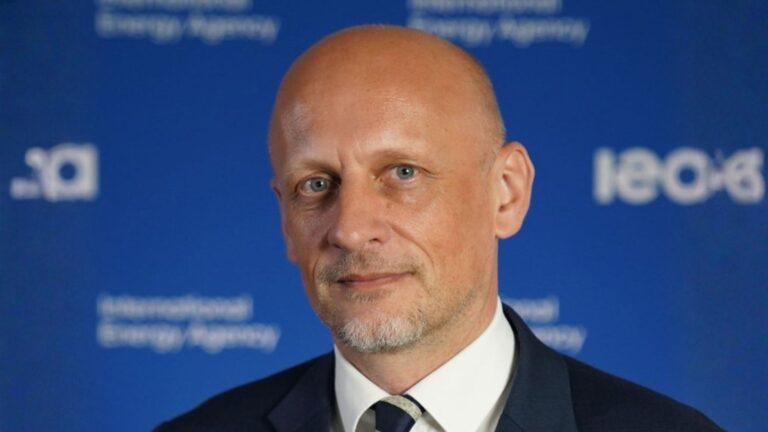
Elected officials face huge challenges when it comes to energy policymaking. They have very little time to learn complicated, nuanced issues. They're bombarded by information — some of...

The ten years since the Paris Agreement was signed at the UN Climate Change Conference, COP 21, have been the ten hottest years on record. And the outcome...
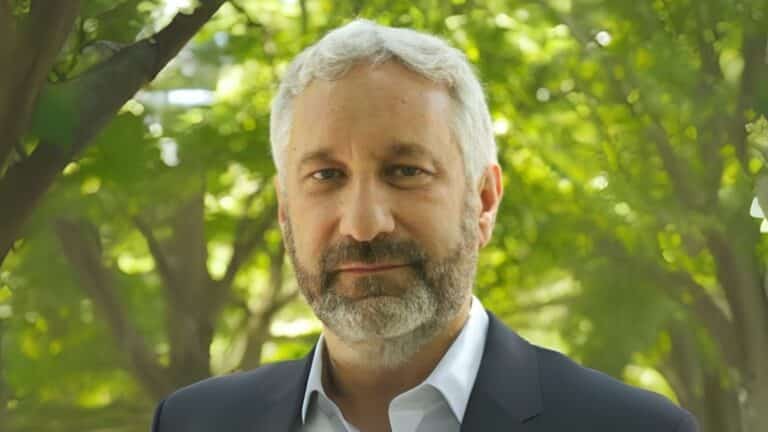
Connecticut needs an honest debate, and fresh thinking, to shape a climate strategy fit for today, not 2022.
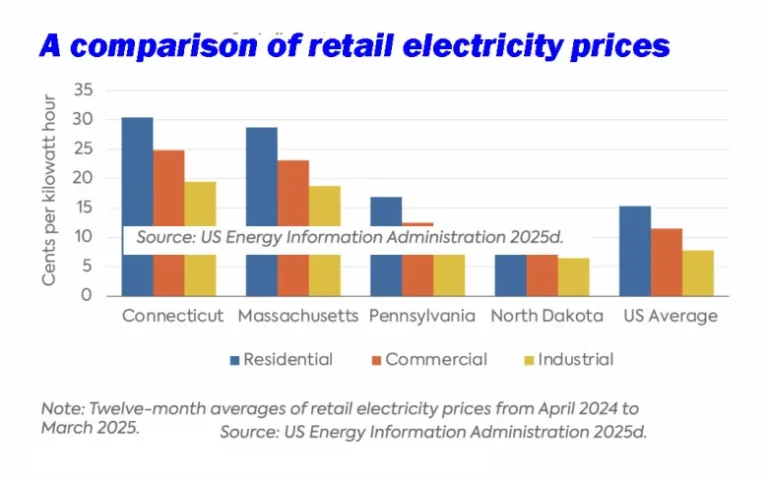
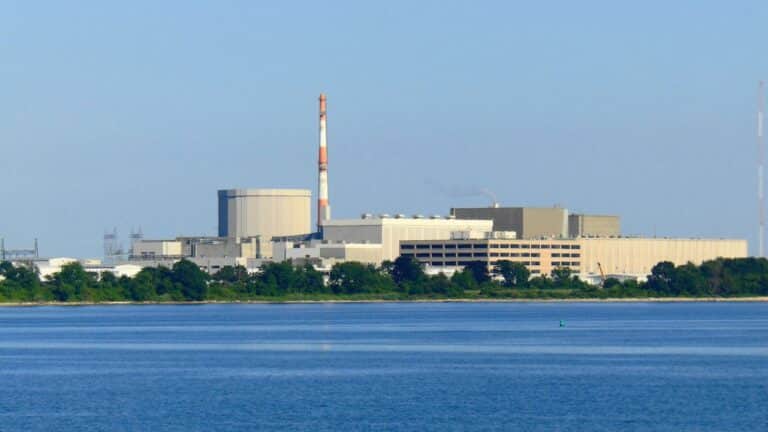
As diplomats meet in Brazil for COP30, global resolve to tackle the climate challenge appears badly frayed.
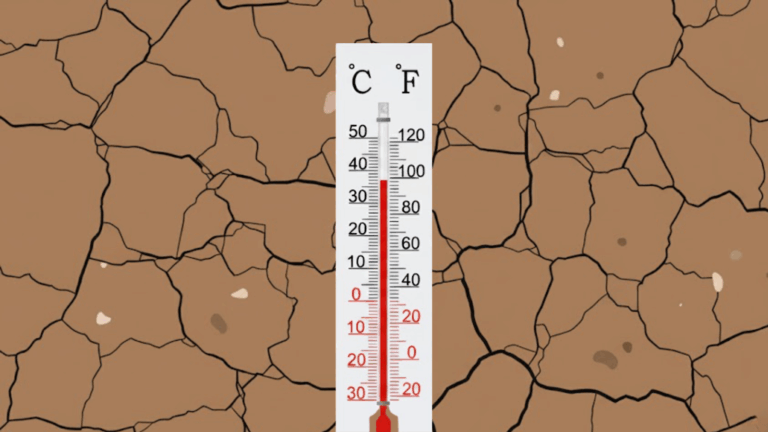
The fashion industry sits at the intersection of climate, energy, and consumption, facing growing pressure to cut emissions, transition to clean energy, and build circular systems across global supply chains.
